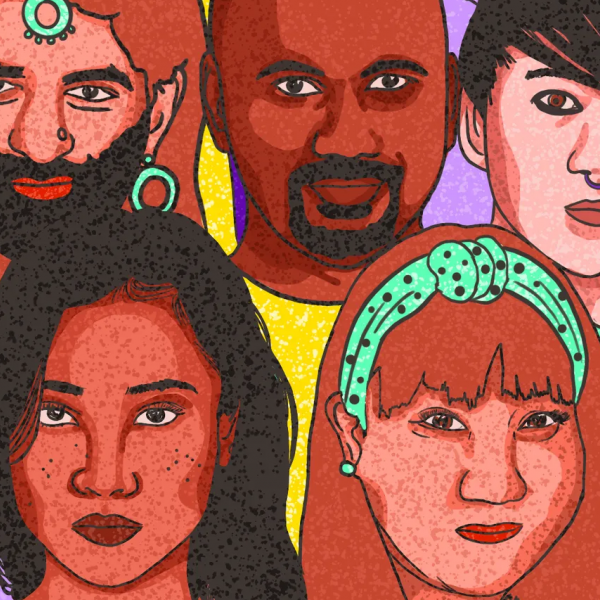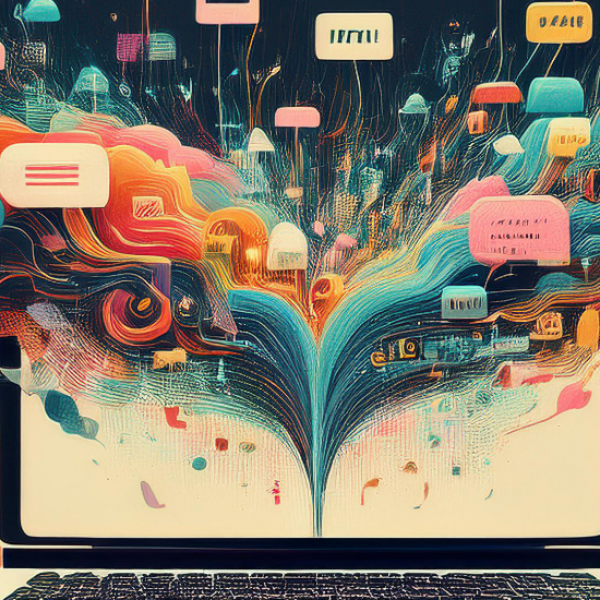Interview with Faculty Fellow Chris A. Eng
The iconic dyed blond wig of Hedwig and the Angry Inch is arguably a star of the musical. One of the numbers, “Wig in a Box,” describes the transformation the protagonist undergoes when placing it atop her head: “Suddenly I’m Miss Farrah Fawcett / From TV / Until I wake up / And turn back to myself / Shag, bi-level, bob / Dorothy Hamill do / Sausage curls, chicken wings / It’s all because of you.” Collateral merchandise celebrates the wig, as does a podcast devoted to the wig’s handler. The wig is a big deal.
So, when scholar of American literature Chris A. Eng attended the Broadway revival of the show a few years ago, his ears pricked up when he heard Hedwig muse that the hair fibers that constitute the wig probably came from a Sri Lankan mother, only to drop the thought entirely. The line felt ironic, given the central storyline about a jilted lover who stews in resentment because of her unacknowledged contributions to her former flame’s success. Even as Hedwig insists on recognition of her own queer labor, Eng says, she pointedly disavows the impact that Asian women made in the creation of her artistic persona. After exploring the idea in a 2018 article, he has now expanded on its themes, arguing more broadly that Asian labor is similarly leveraged but overlooked in the production of gay cultural works for a new book project, “White Gay Fantasies: A Queer Romance for the Asiatic Presence.” Read on for a preview of his book-in-progress.
Briefly, what is your book about?
“White Gay Fantasies” argues that a discernible Asiatic presence haunts the repertoires of LGBTQ cultural productions that give expression to the social import of same-sex desire as a potent political force around the turn of the millennium. Despite the frequency, the Asiatic often manifests unexpectedly, through roles that, though seemingly inconsequential, are in fact pivotal to upholding white gay fantasies. I reckon with the persistence and prevalence of the Asiatic appearing varyingly as backdrop, prop or minor characters across LGBTQ cultural productions. The book charts the work that the Asiatic presence performs for white gay fantasies as well as the Asian American writers who inhabit and theorize from this spectral position to interrogate the fortification of whiteness.
What are the hallmarks of “white gay fantasies”?
At baseline, these fantasies aim to convey how and why same-sex desire between men holds the potential for activating positive social transformation. On the one hand, these fantasies center depictions of struggles by gay men as indicative of homophobic hate and social intolerance. On the other, these cultural representations show us how the courage of gay men to love one another, despite these obstacles, exemplifies the motto that “love wins.” The problem, however, is that such liberal fantasies most frequently center on individual experiences without considerations of structural, material conditions. Moreover, while these fantasies interpret the universality of queerness, they obscure the particularities with which the stories are based on white gay male characters. In effect, the differences made by race, gender and other forms of embodiment are abstracted under visions of queer love.
How do Asian Americans characters fit into this picture?
My book project focuses in on an Asiatic presence within the last two decades or so to make a case for how it helps reconcile a unique set of linked conundrums faced by queerness around the turn of the millennium. I suspect that Asianness is used to resolve white gay fantasies’ collusion with post-racialism. My hypothesis is that Asianness imparts a kind of difference that is fundamental yet disavowed in abstracting the particularities of white gay fantasies such that they can function as putatively universal accounts of queer love.

How do Asian American writers engage with white gay fantasies?
Asian American artists engage with white gay fantasies in a multitude of ways. Much of earlier works in Asian American studies have been rightfully focused on refuting dehumanizing, stereotypical depictions that cast Asians as foreigners, invisible, subservient or objects. The strategy I’m most interested in exploring is how creative Asian American works show and interrogate ways ideologies of post-racialism by counterintuitively inhabiting these subordinated or compromised positions to which Asian/Americans are relegated within these fantasies.
What are some of the works you’re looking at?
The first half of the book takes up paradigmatic cultural productions that emblematize the work that the Asiatic presence performs for such fantasies — the 2014 Broadway hit musical Hedwig and the Angry Inch, the 2007 novel Call Me by Your Name and Andrew Sean Greer’s Pulitzer Prize–winning 2017 novel, Less. Meanwhile, the second half analyzes works by Asian American writers who inhabit this spectral position to interrogate the fortification of whiteness: Hanya Yanagihara’s best-selling 2015 novel, A Little Life; Young Jean Lee’s 2018 Broadway play, Straight White Men; and Ocean Vuong’s acclaimed debut novel, On Earth We’re Briefly Gorgeous (2019).
What are we as media consumers to do with works that promote the universalist/white gay fantasy frame?
These fantasies can be very alluring and persuasive. Usually, “white gay fantasy” is used as a kind of epithet to dismiss certain cultural productions for presenting an overly romanticized vision of what it means to be queer. And yet, dismissing these artistic works wholesale means that we might neglect to grapple with how this fantasy is constructed and why it’s so captivating.

For instance, there were critics that hailed the 2017 film Call Me by Your Name as not just a universal gay love story but a portrayal of universal love writ large. How is it that a story that features a young white gay teenager — whose parents are academics and rich enough to have a house in Italy — falling in love with an older man comes to be seen as “universal”? In contrast, why is it that the treatment of queer love between Black boys and men in Moonlight (2016) is not seen as grounds for a universal story of love?
“White gay fantasies” offer an invaluable opportunity to assess conceptions about what kinds of stories get to count as universal and why. More importantly, they invite us to ask what gets obscured under these processes of abstraction. What gets elided in these fantasies are not just analyses into various kinds of social differences but also a more difficult conversation about the structural inequities that shape differential distributions of power, privilege and vulnerability.
Headline image: Still from the film version of Hedwig and the Angry Inch (2001).





